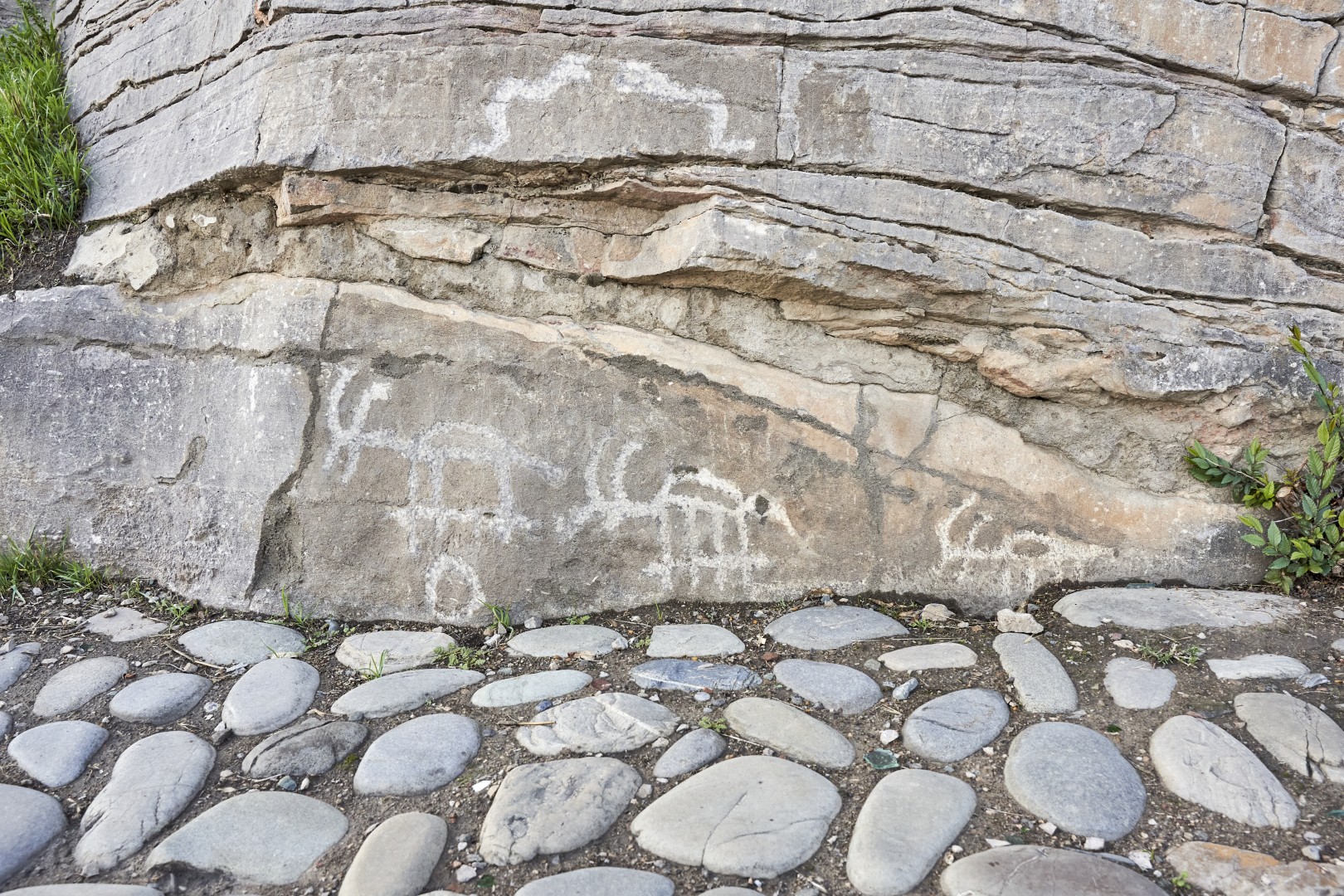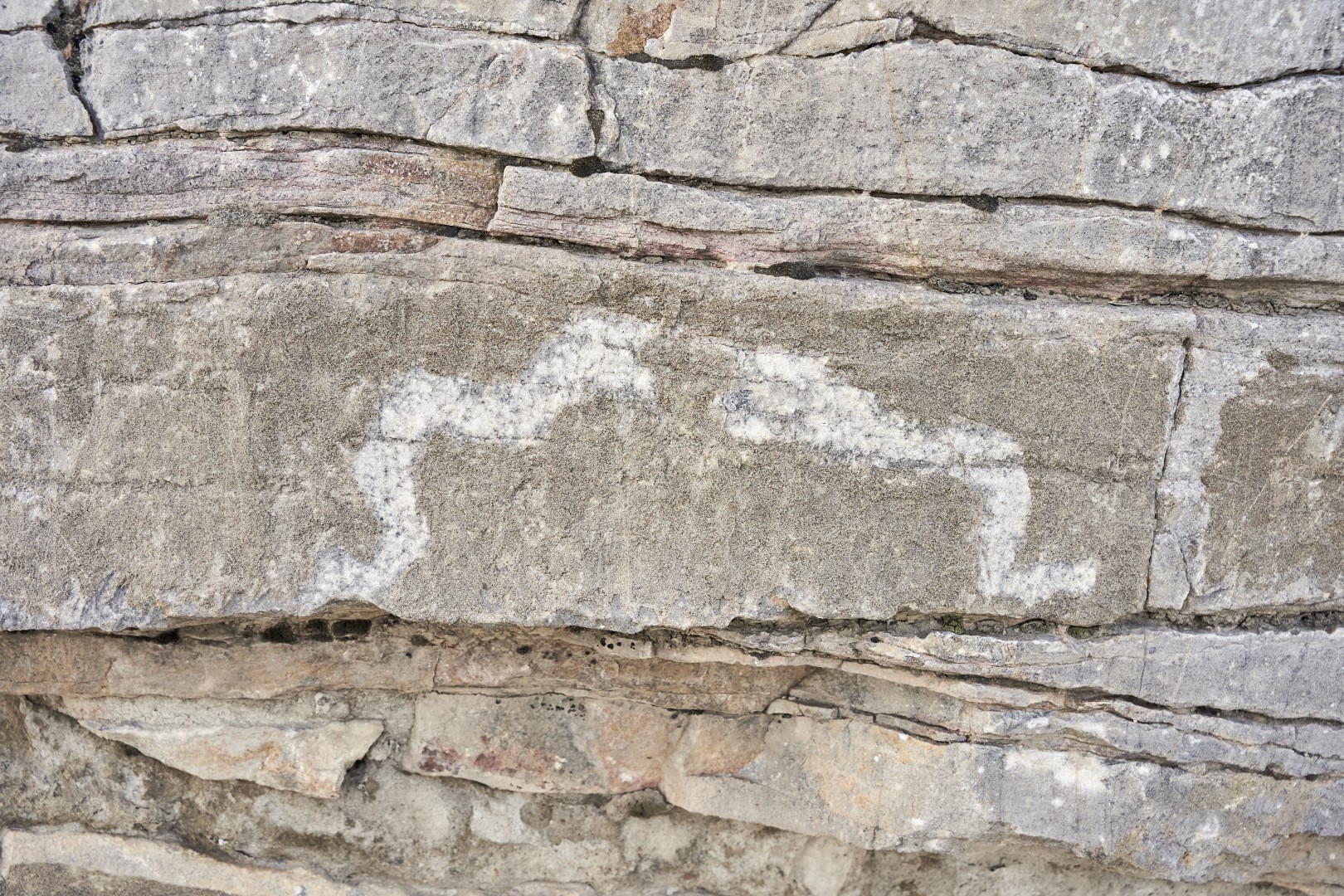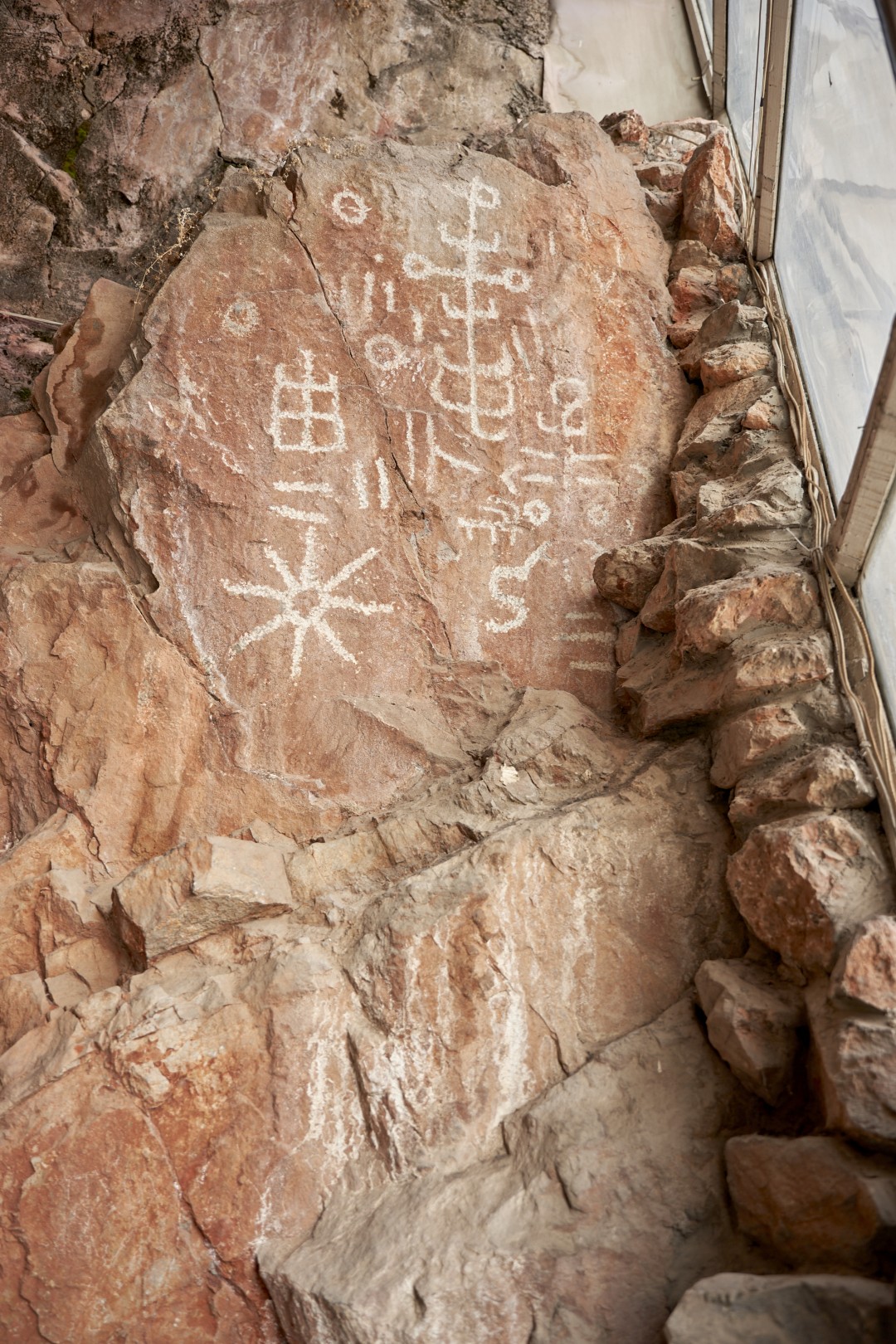

Entrance fee – 50-70 KGS

Summer 09:00 – 20:00

Winter 09:00 – 17:00

Monday

+996 703 57 27 77
Add to My Tour
Rock Carvings
Petroglyphs, visual remnants of Osh’s millennia-old history, can be found almost everywhere on Suleiman Mountain. They are most numerous on the southern, eastern, southeastern and southwestern slopes of all five peaks. Some of them are located in accessible areas, others in caves and grottoes. According to a conservative estimate, there are about 400 rock carvings scattered across the mountain.
Scientists divide them into three groups according to their content: anthropomorphic, zoomorphic and geometric signs. Most petroglyphs depict solar signs, crosses, squares, arrows, tree-like patterns, bird tracks and “spider webs.”
There are also unique petroglyphs. For example, there is an image of three horses held by a man with a harness, and a depiction of archers firing at each other on the top of Eer Too, a peak on the western part of Suleiman Mountain.
Rock carvings were drawn with stone and metal tools on horizontal and vertical surfaces, using hammering or engraving techniques. They are made in silhouette, contour and line-scheme patterns.
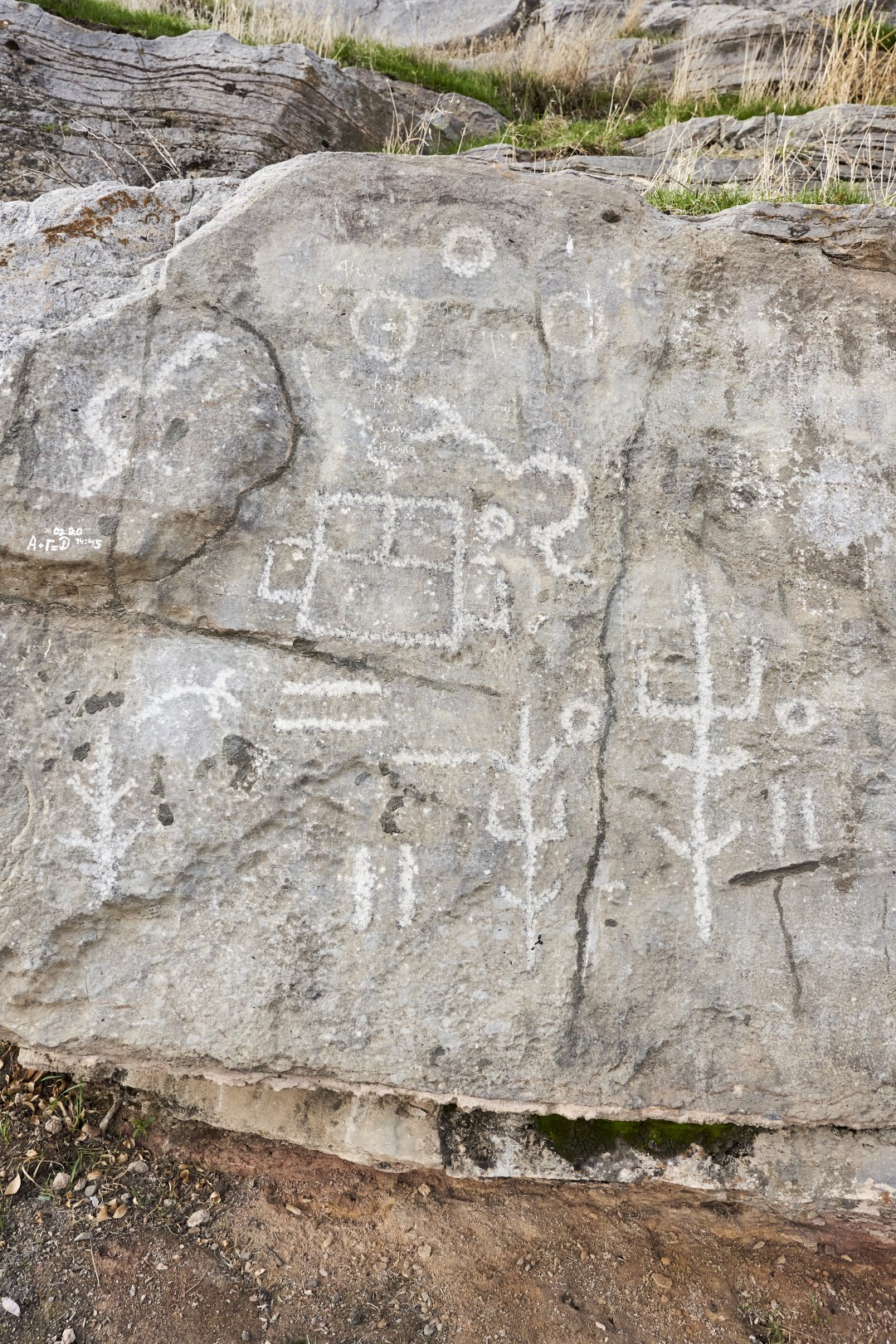
The petroglyphs of Suleiman Mountain date from the mid-15th century B.C. to the 7th century AD. Most of the images date back to the Bronze Age. Depictions of Davanese horses and goats, common in the mountains of Surot-Tash in the Aravan district and Abshyr-Say in the Nookat district, date to the end of the 1st millennium B.C. and the beginning of the 1st millennium A.D.
A distinguishing feature of the Osh petroglyphs, scholars note, is the stable set of signs, compositions of various figures with recurring symbols, strong links with cult places and variations in drawing technique, depending on the location. Some images are from the modern period, inscribed with the date of execution and even the names of the artists. Among the most famous of these petroglyphs is an inscription in Kufic script bearing the name of Emir Nasr ibn Ahmad of the Samanid dynasty (940-941), interpreted in part by Russian orientalist Nikolai Veselovsky in 1885.

Locations Nearby
-

Gate of Fire at Suleiman Mountain
Ancient Osh with its majestic Suleiman Mountain has a magic power, attracting adherents of various religions and beliefs, serving as a place of pilgrimage for…
-
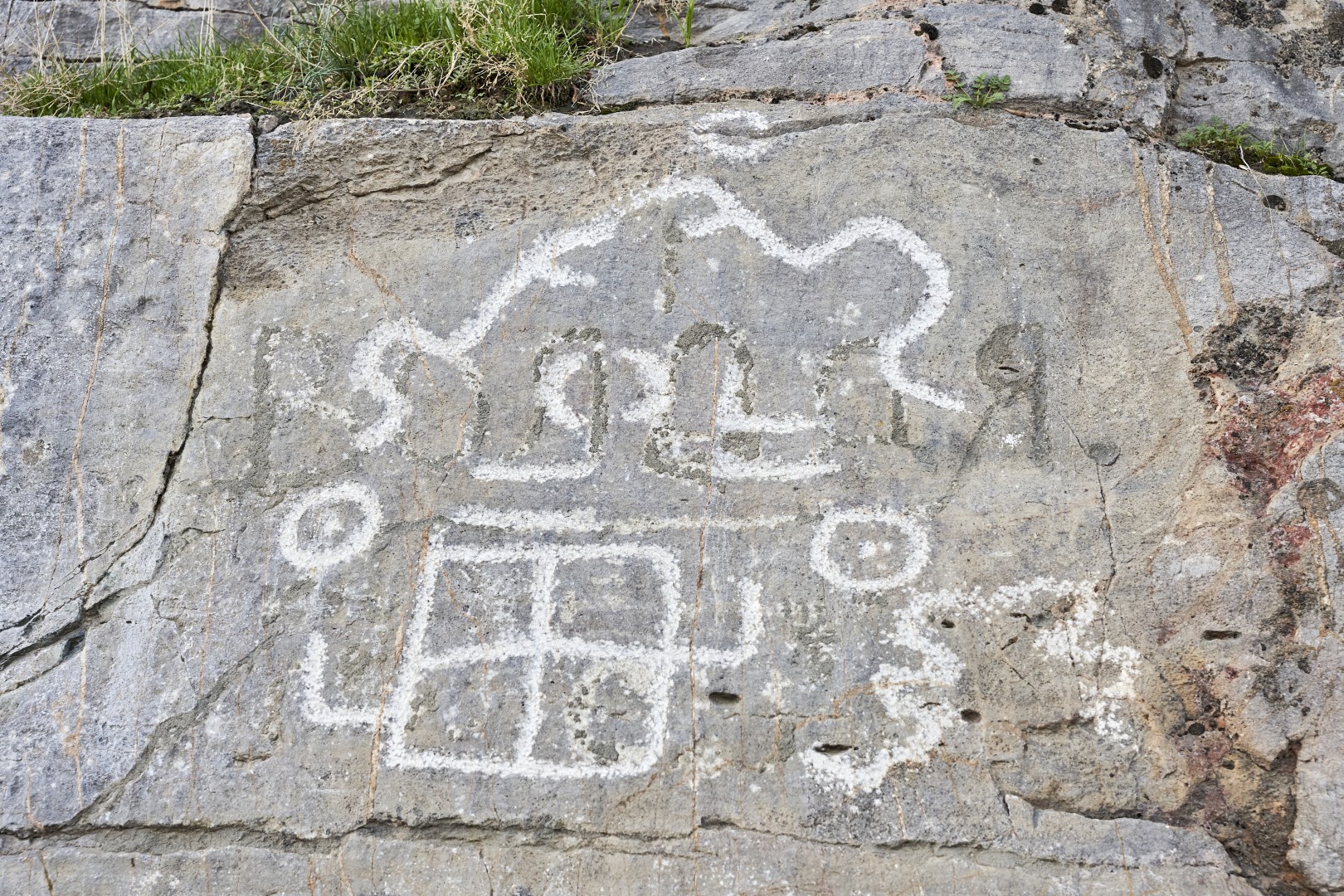
Rock Carvings
Petroglyphs, visual remnants of Osh’s millennia-old history, can be found almost everywhere on Suleiman Mountain. They are most numerous on the southern, eastern, southeastern and…
-
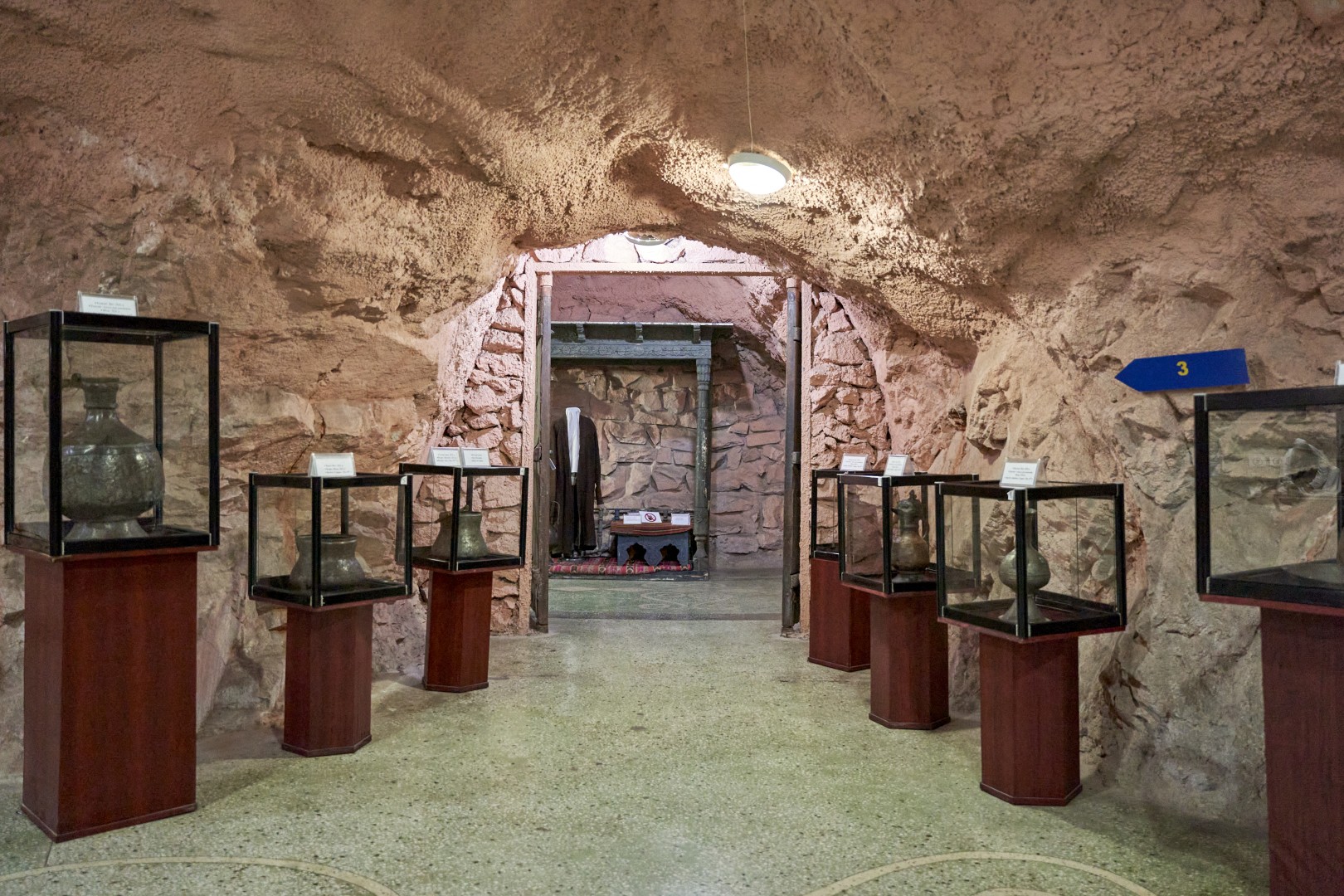
Museum in Rushan Cave
On a hot July day in 1978, the new Historical and Local History Museum of Osh, housed within a winding complex of 13 caves and…
-
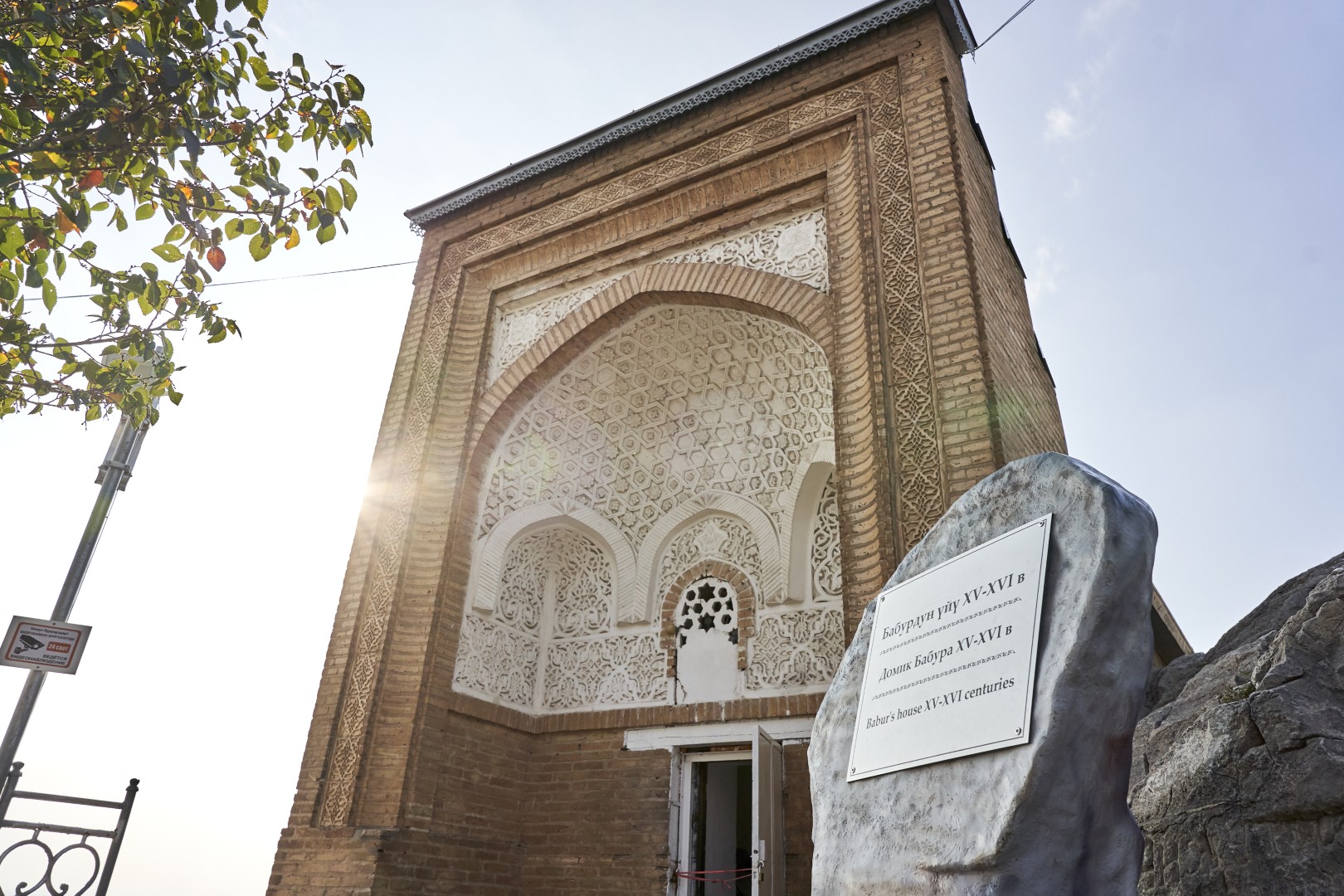
Hujra of Babur, the Founder of the Mughal Empire
The most famous historical monument on Suleiman Mountain is the hujra of Zahīr ud-Dīn Muhammad Babur, the founder of the Mughal Empire in the Hindustan…
Other Locations
-

History of the Bazaar
Osh’s old bazaar dates back to the founding of the city, some three thousand years ago. Today, many of the smaller local bazaars have disappeared…
-

Navai-Nan: Delicious Flatbreads of the South
Nowhere else in Kyrgyzstan is there such a variety of tandoor flatbreads as in Osh! In almost every quarter there is a tandoor stand, where…
-

Rock Carvings
Petroglyphs, visual remnants of Osh’s millennia-old history, can be found almost everywhere on Suleiman Mountain. They are most numerous on the southern, eastern, southeastern and…
-
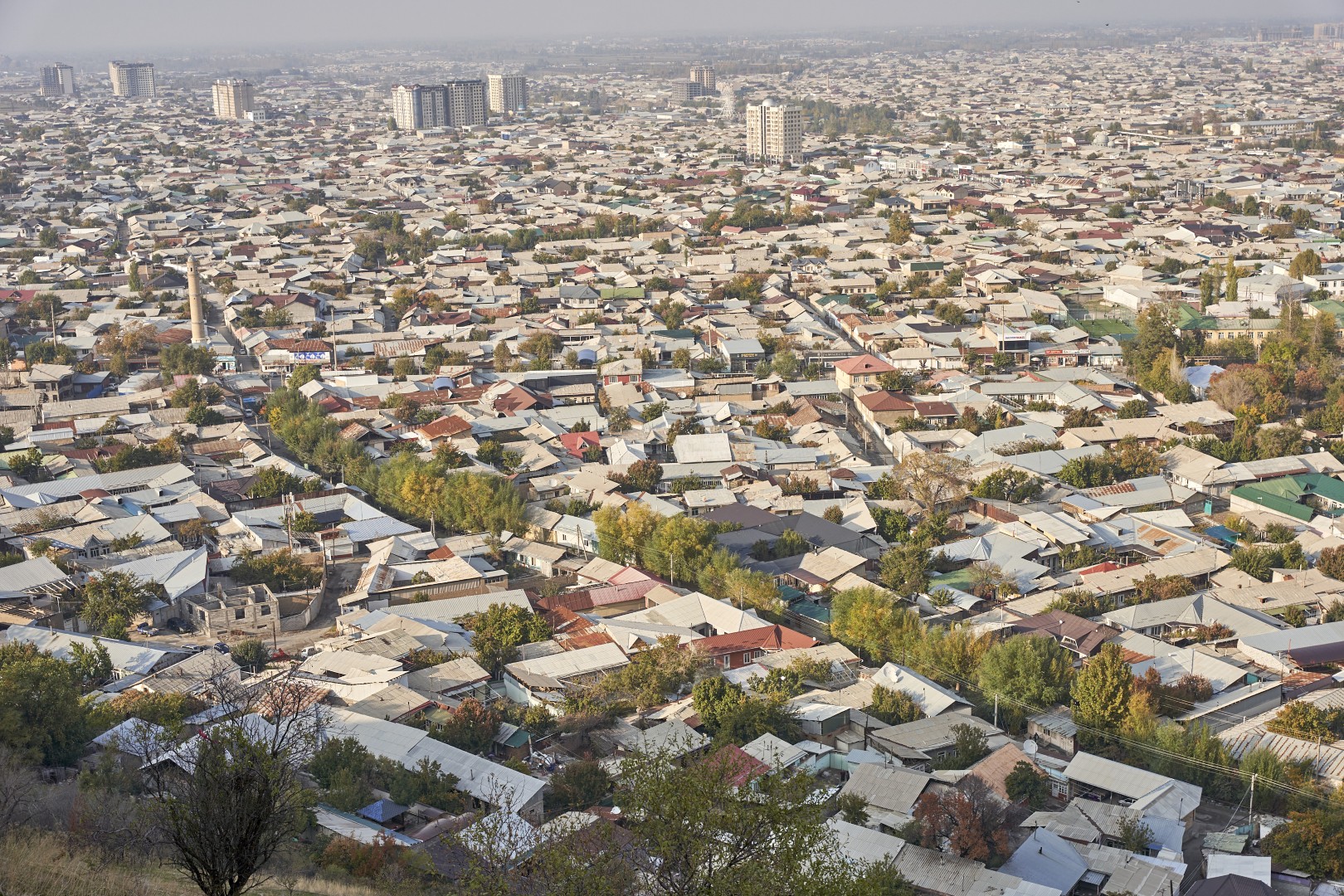
Soviet city near the Alai Mountains
Welcome to Soviet Osh! The current appearance of the city was largely formed during that period. The Second World War delayed the realization of the…
